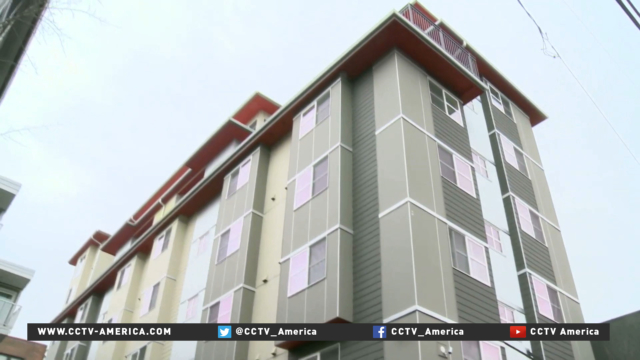The U.S. city of Seattle now boasts the highest number of micro-housing apartments in the U.S. The smallest units are around 21 square meters (226 square feet), about the size of two prison cells. While the concept isn’t new in densely populated cities such as Hong Kong, it’s a trend many developers believe will pay of well. CCTV America’s Chris Casquejo reported this story from Seattle.
For Seattle residents like Roger Valdez, smaller is better. His bedroom doubles as his living room and instead of a staircase, a ladder gets him to the top of his 67 square meter (721 square feet) apartment, which he rents for $1,350 a month.

“It encourages people to think hard about how much stuff we acquire. And fortunately, I just didn’t have a lot of stuff,” said Valdez.
Valdez’ apartment is still about three times larger than the smallest apartments in town.
Seattle allows micro-housing units as small as 70 square feet, which is around 6.5 square meters, but only in the city’s most densely populated neighborhoods.
At last count, Seattle has about 3,000 micro housing apartments.
Developers say renters are typically young professionals who don’t have cars and often work two jobs.
Seattle is at the forefront of the trend in the United States. New York City, Boston and San Francisco each have fewer than 400 micro-housing apartments.
With space at a premium, full kitchens aren’t possible, but developers still have some guidelines.
“They still want most of the amenities such as a sink or a private bathroom. If you can put large windows in or higher ceilings, they like that as well,” micro-housing developer Scott Shapiro said.
All of Shapiro’s micro-housing apartments are rented, but demand in the U.S. is still low compared to Hong Kong, where earlier this summer, thousands of prospective buyers competed for the chance to buy micro-apartments for $260,000 that are 52 square meters (559 square feet) in size.
“There are always people that need affordable housing, that want to live in close proximity to a grocery store, to a drugstore, to restaurants, bars, and work,” Shapiro said.
 CGTN America
CGTN America
